Creating a Zen living room is about more than just aesthetics; it's about cultivating a space where calm and tranquility are the primary focus. Imagine stepping into a room where soft lighting, natural textures, and minimalist furniture invite you to slow down and breathe. By integrating natural materials like wood and stone, while maintaining an uncluttered, simple design, you can create a living room that fosters relaxation and mindfulness. These 25 stylish zen living room ideas will help you transform your home into a sanctuary of peace, perfect for unwinding after a hectic day.
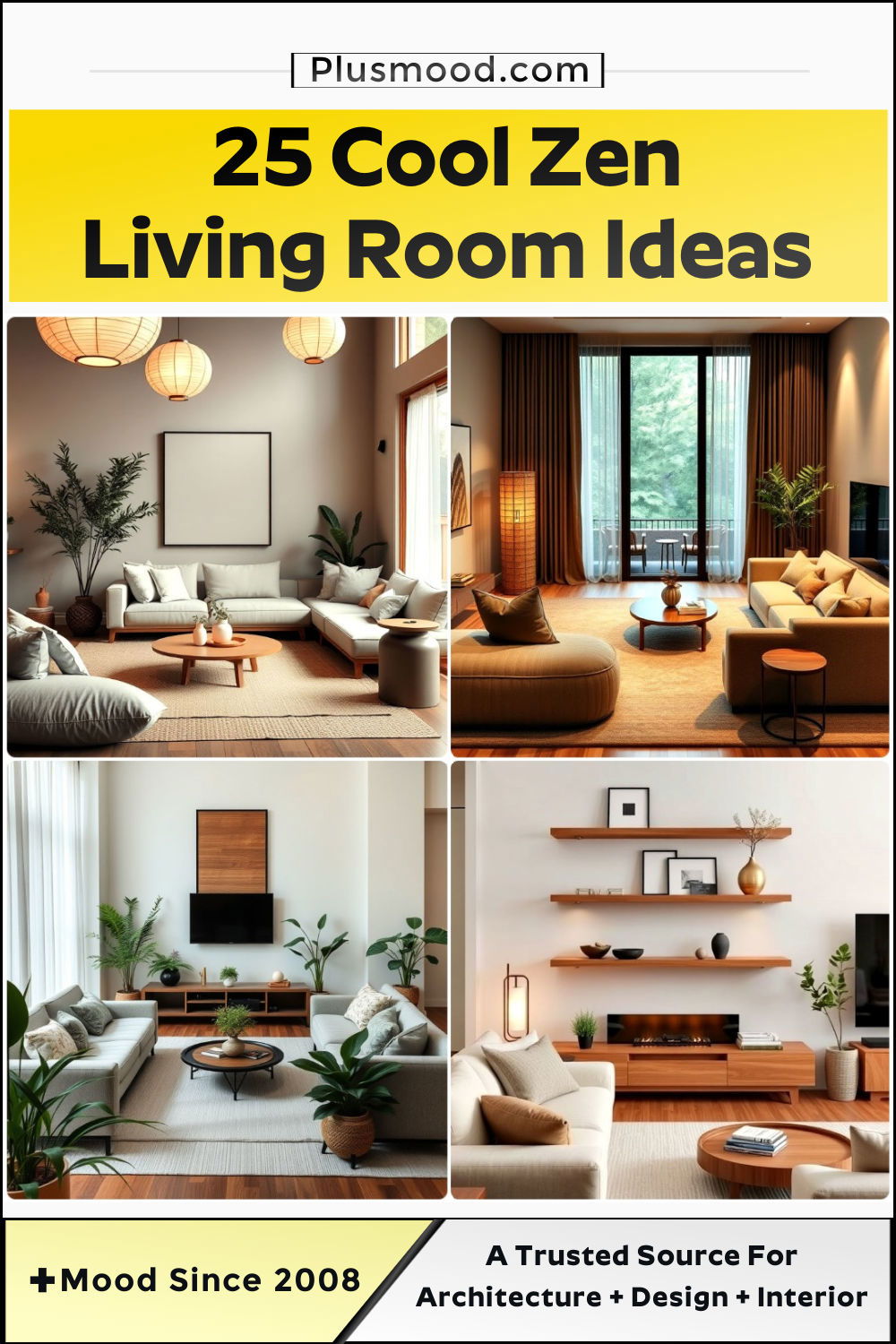
1. Neutral Color Palette
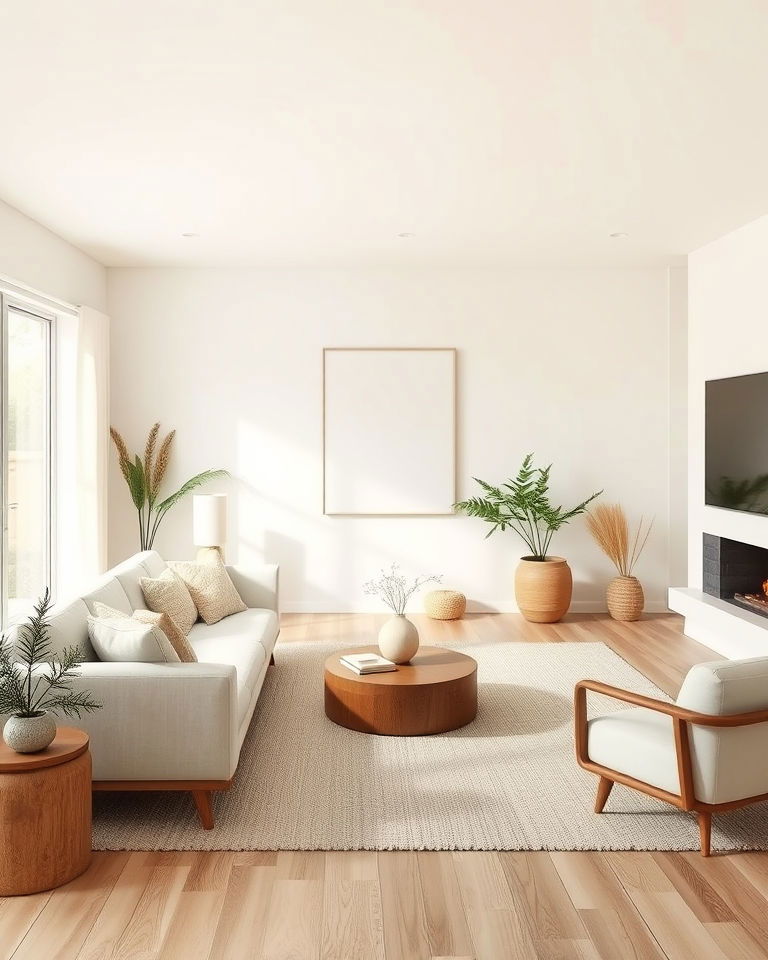
A Zen living room begins with a neutral color palette. Shades of white, beige, soft grays, and light browns create a calm and soothing environment. These colors reflect simplicity and openness, allowing you to feel grounded and at peace. A neutral backdrop makes it easier to add other natural elements and calming accents without overwhelming the senses, helping to maintain a clutter-free and balanced aesthetic.
2. Minimalist Furniture
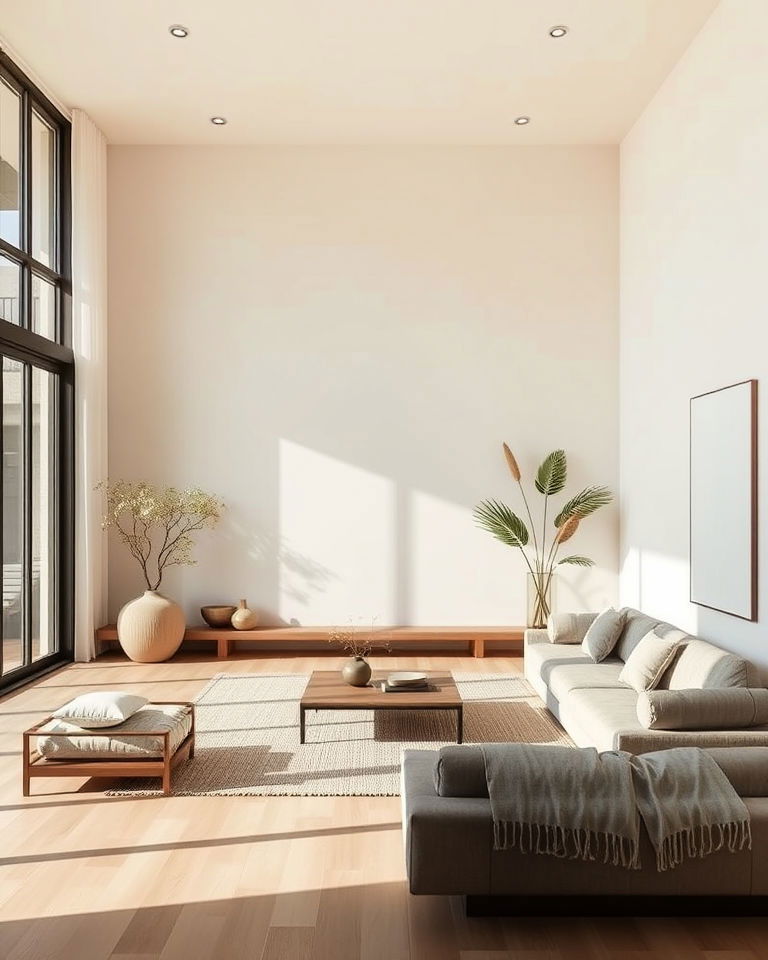
Less is more in a Zen-inspired space. Choose minimalist zen living room design with clean lines and simple shapes to keep the room open and uncluttered. Opt for low-profile pieces, such as floor-level sofas or platform-style seating, to encourage a sense of groundedness. Simple, functional furniture creates a peaceful environment that fosters relaxation and mindfulness.
3. Natural Materials

Create tranquility with calming zen living room ideas that incorporate natural materials for a peaceful, harmonious space. Incorporate natural materials like wood, stone, bamboo, and cotton to bring an organic feel to your Zen living room. Wooden furniture, stone sculptures, or bamboo accents offer a direct connection to nature, which is essential in creating a serene atmosphere. The tactile and visual softness of these materials reinforces the tranquility you want to evoke.
4. Indoor Plants

Bring nature indoors with the inclusion of indoor plants to enhance the Zen atmosphere. Greenery like bonsai trees, bamboo, or peace lilies adds a touch of life to your Zen living room. Plants purify the air and help create a balanced, harmonious environment, which is central to Zen philosophy. Keep plant arrangements simple to maintain the overall sense of calm and minimalism.
5. Declutter and Simplify
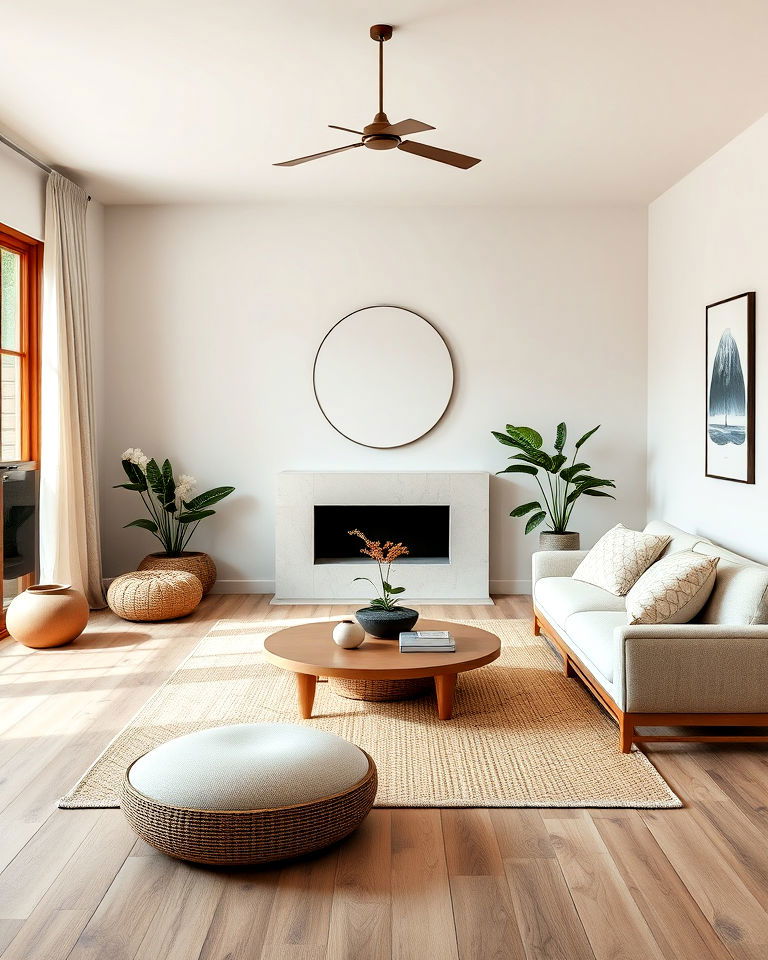
A clutter-free space is essential in Zen living room design to create a tranquil and organized environment. Keep surfaces clear, remove unnecessary decor, and ensure that each piece of furniture or decoration has a purpose. By decluttering, you create a more open and peaceful space that encourages relaxation and mental clarity. Simplicity is the key to achieving a truly Zen atmosphere.
6. Low Lighting
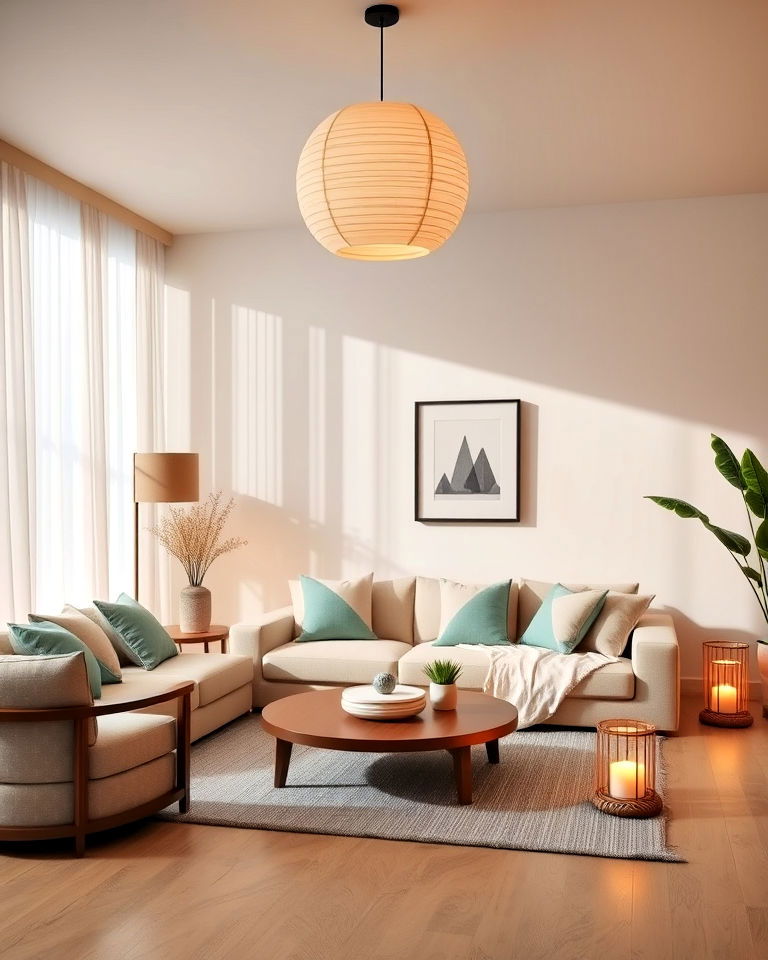
Opt for soft lighting to create a tranquil ambiance that complements a Zen-inspired space. Avoid harsh overhead lights and instead use floor lamps, table lamps, or paper lanterns that cast a gentle, warm glow. Candles are also a great option for adding both light and a calming atmosphere. Proper lighting is crucial in fostering a sense of calm and serenity.
7. Water Features
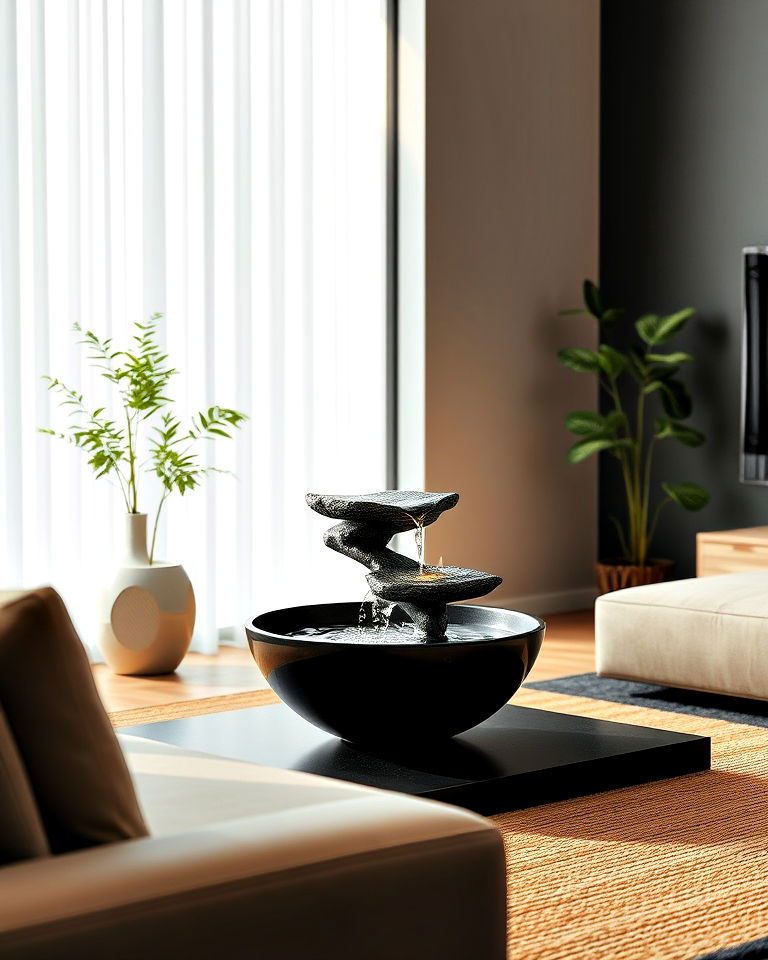
A small water feature, such as a tabletop fountain or wall-mounted waterfall, can introduce a calming element into your living room, enhancing the tranquil vibe. The sound of flowing water helps reduce stress and promotes relaxation, making it a perfect addition to a Zen space. Ensure the water feature is minimalist and not too elaborate to maintain the overall simplicity of the room.
8. Natural Scents
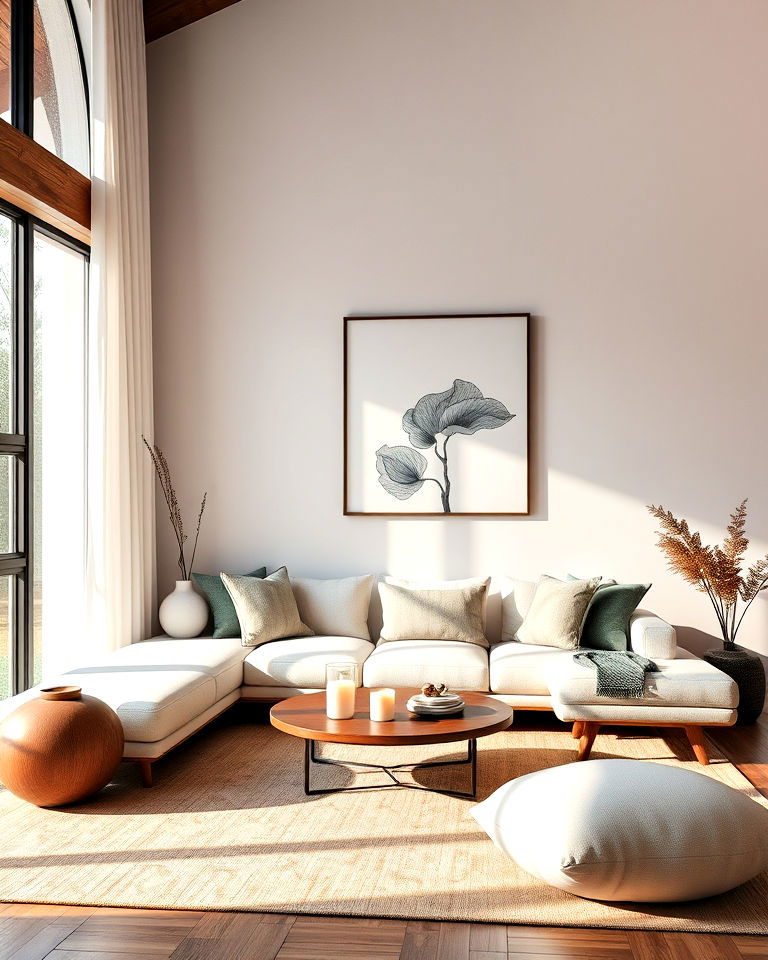
Embrace simplicity with a serene minimalist zen living room design for a clutter-free environment. Incorporate natural scents through the use of essential oils, candles, or incense. Choose calming fragrances like lavender, sandalwood, or eucalyptus, which can help you unwind and promote mindfulness. Natural scents enhance the tranquil atmosphere of a Zen living room by engaging your senses in a subtle and soothing way.
9. Open Space and Flow
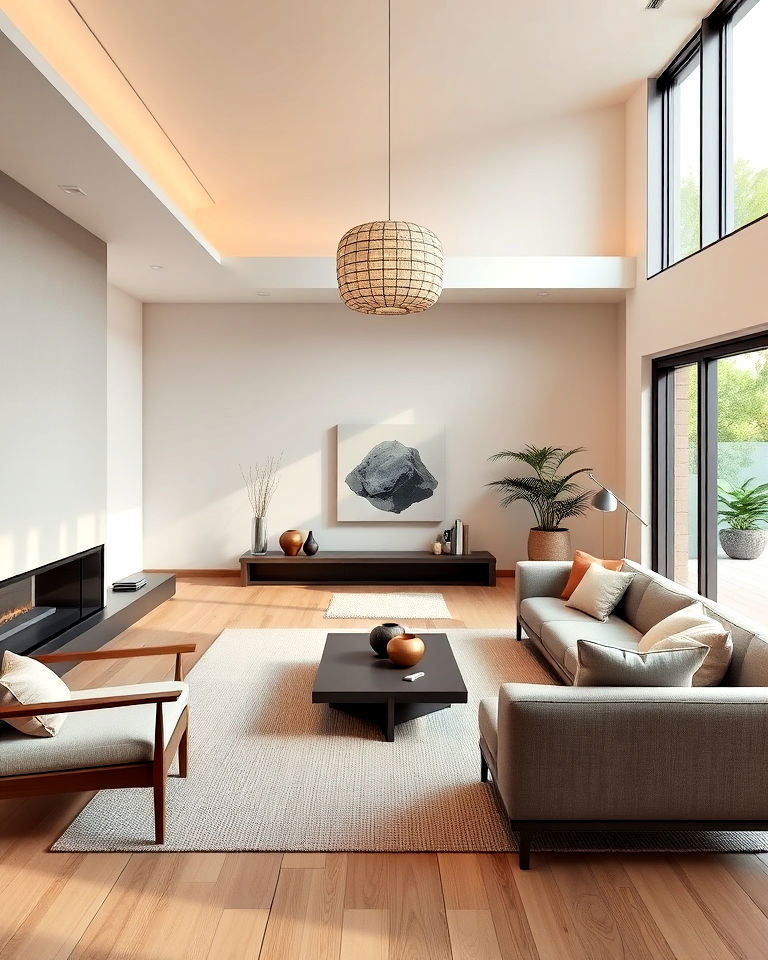
Design the room to have an open flow, with plenty of space to move freely. Arrange furniture in a way that encourages easy movement and creates a sense of spaciousness. An open layout is essential to Zen design, as it promotes a feeling of lightness and freedom, helping you stay mentally and physically uncluttered.
10. Soft, Natural Textures
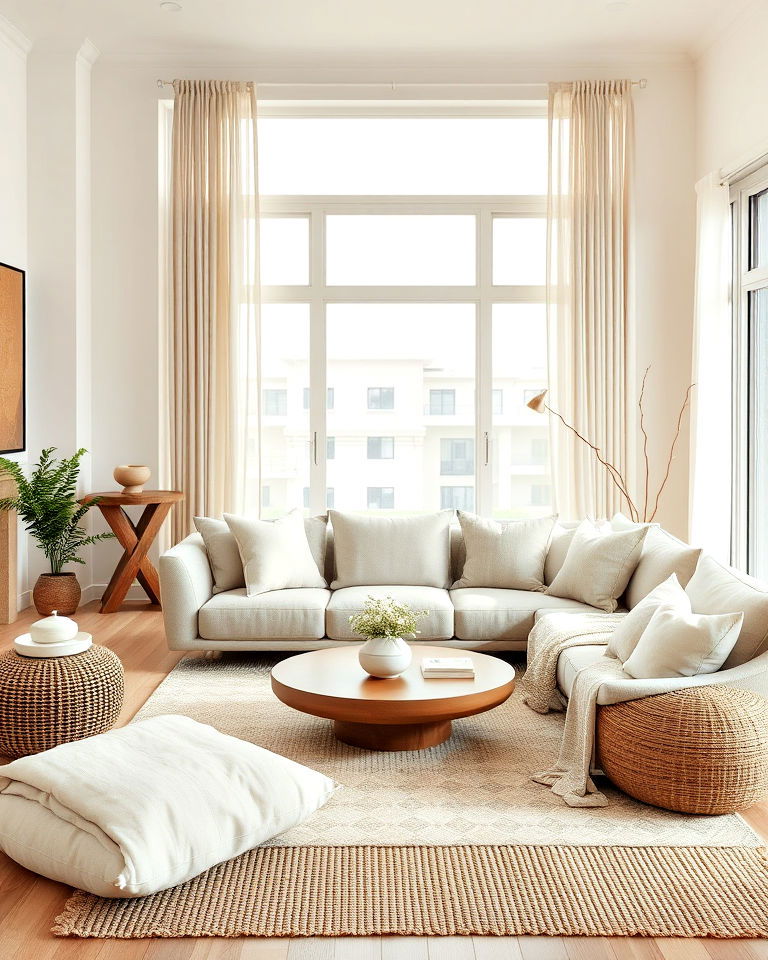
Incorporate soft, natural textures like cotton, linen, or wool in throws, pillows, and rugs. These materials are comforting to the touch and help soften the overall look of the room. Textures should complement the neutral palette and enhance the feeling of warmth and serenity without overpowering the minimalist design.
11. Tatami Mats or Floor Cushions

Tatami mats or floor cushions are a traditional element of Japanese Zen spaces and can be used to add authenticity to your living room. They offer a low seating option and create a connection with the floor, encouraging a sense of grounding and mindfulness. This seating style promotes relaxation and comfort in a minimalist way.
12. Shoji Screens
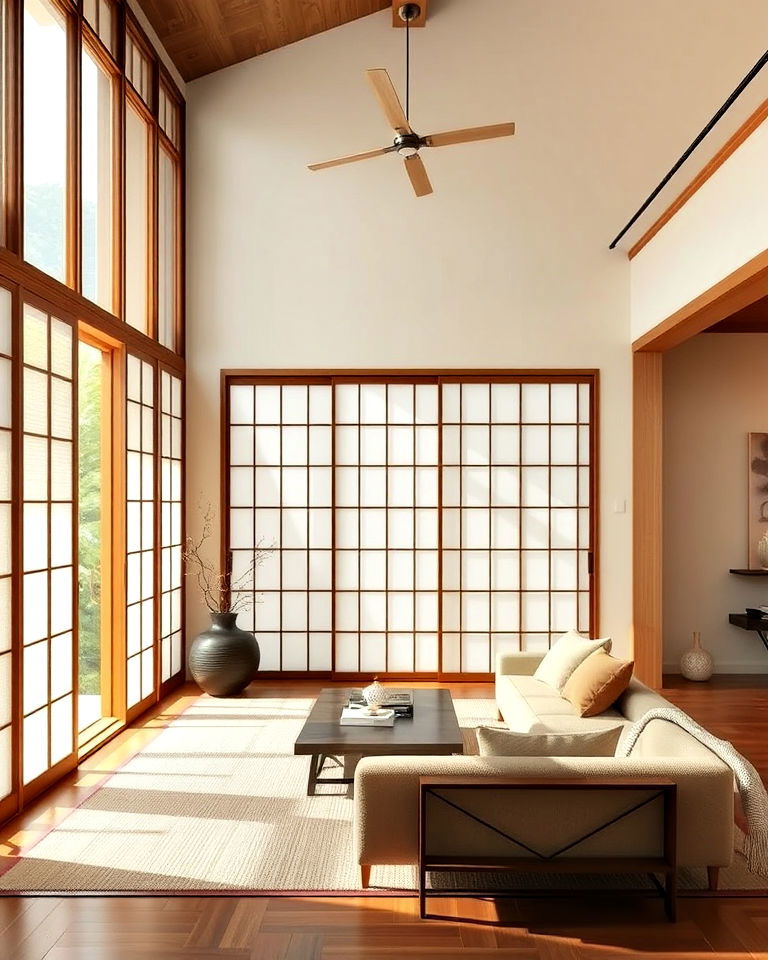
Shoji screens, made from paper and wood, are a classic element of Zen interiors. These screens can be used as room dividers or window coverings, allowing soft, filtered light to enter the space. Shoji screens add a touch of traditional Zen style while maintaining the room's light and airy feel. They also offer privacy without closing off the space completely.
13. Earthy Accents
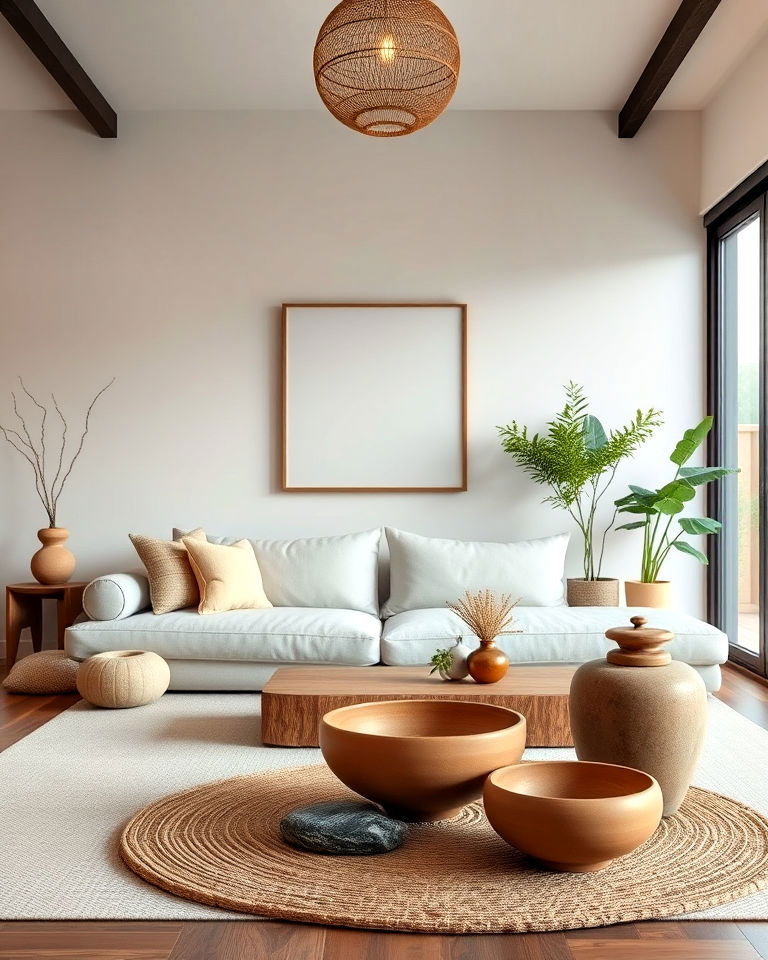
Enhance your space with soothing zen living room decor for a balanced and relaxing atmosphere. Add subtle earthy accents, such as clay pots, stone sculptures, or wooden bowls. These natural elements connect the room to the earth, bringing balance and grounding to the overall design. Keep these accents minimal and strategically placed to avoid cluttering the room. Each piece should add to the sense of calm and mindfulness.
14. Meditation Nook
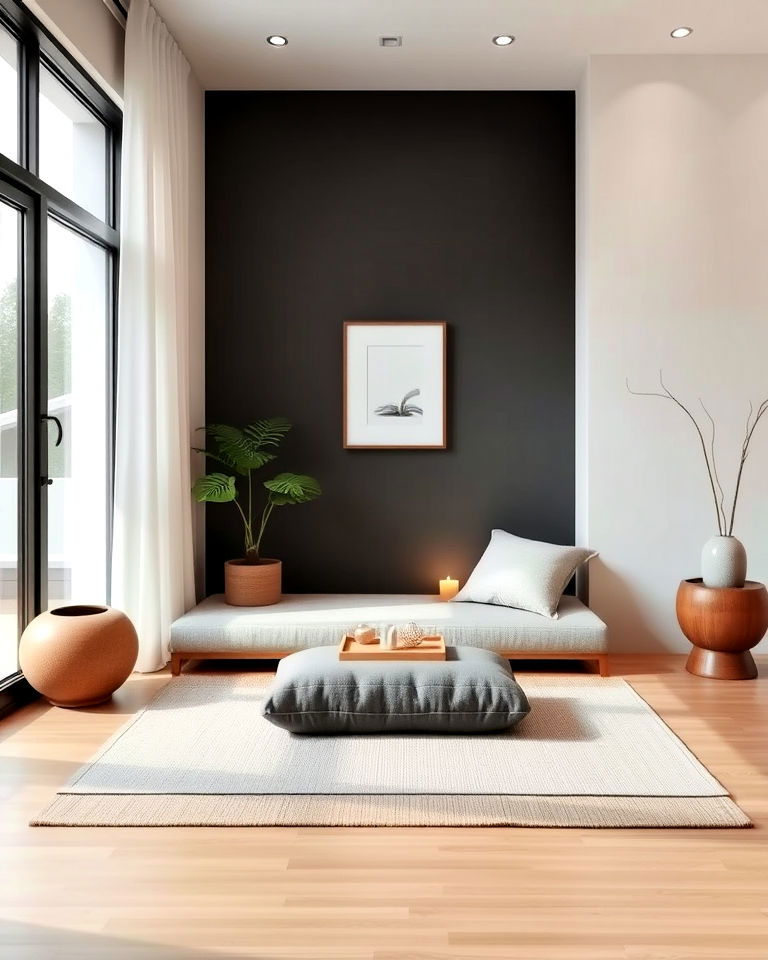
Create a dedicated corner for meditation or quiet reflection. Use a floor cushion, soft rug, or low bench to define the space. Keep the area free from distractions and consider adding a small plant, a candle, or a simple piece of artwork. This peaceful spot will help you pause, unwind, and refocus, making it an essential part of a Zen living room.
15. Low Coffee Tables
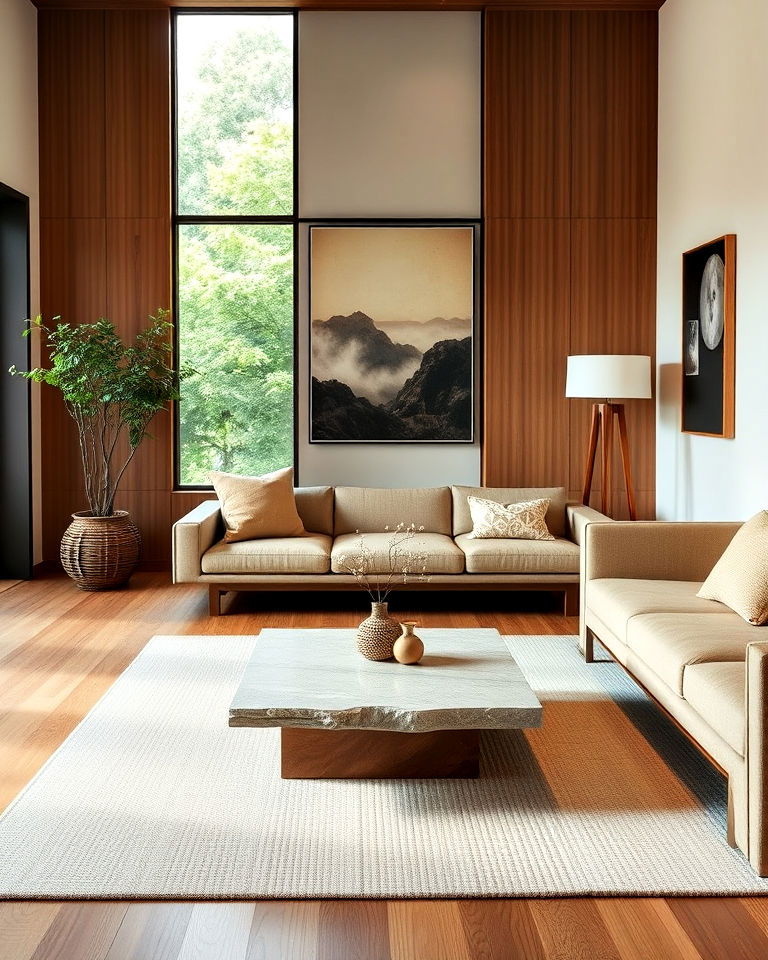
Low-profile coffee tables with clean, simple lines are ideal for a Zen living room, enhancing the space's minimalist charm. Opt for natural wood or stone materials to enhance the room's organic feel. A low coffee table encourages relaxation and keeps the focus on the floor, contributing to the grounded and peaceful atmosphere Zen design promotes.
16. Paper Lanterns
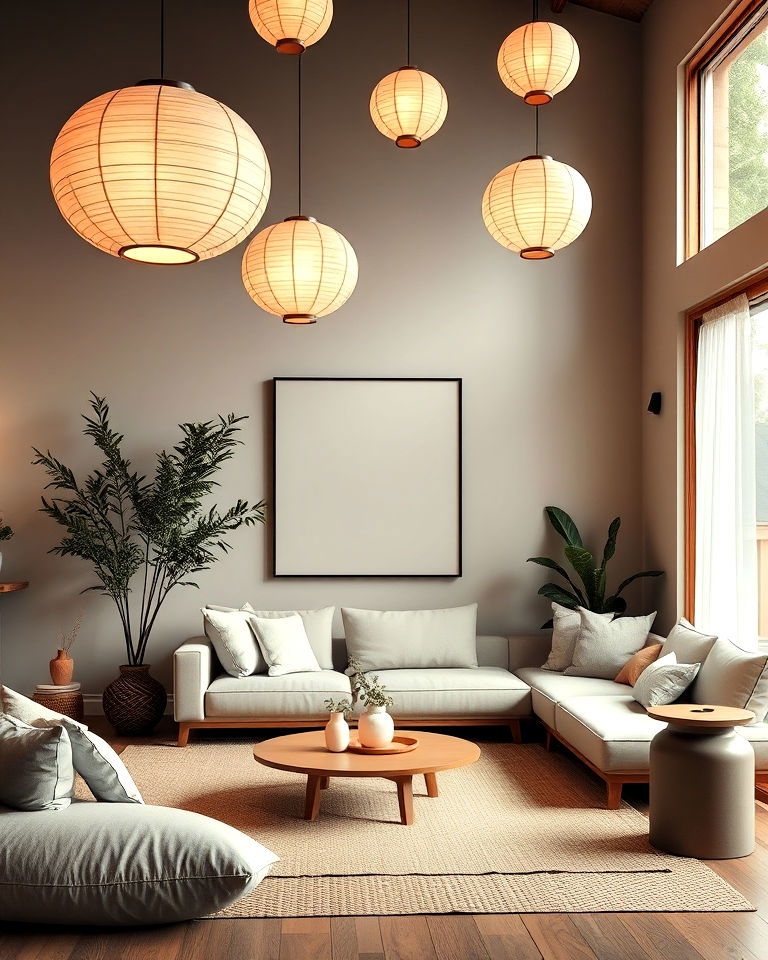
Paper lanterns add a soft, diffused light that enhances the calm ambiance of a Zen living room. Choose lanterns with a simple design and neutral tones to maintain the room's minimalist aesthetic. The gentle glow from paper lanterns can make the space feel warm and inviting without overpowering the serene atmosphere.
17. Nature-Inspired Artwork
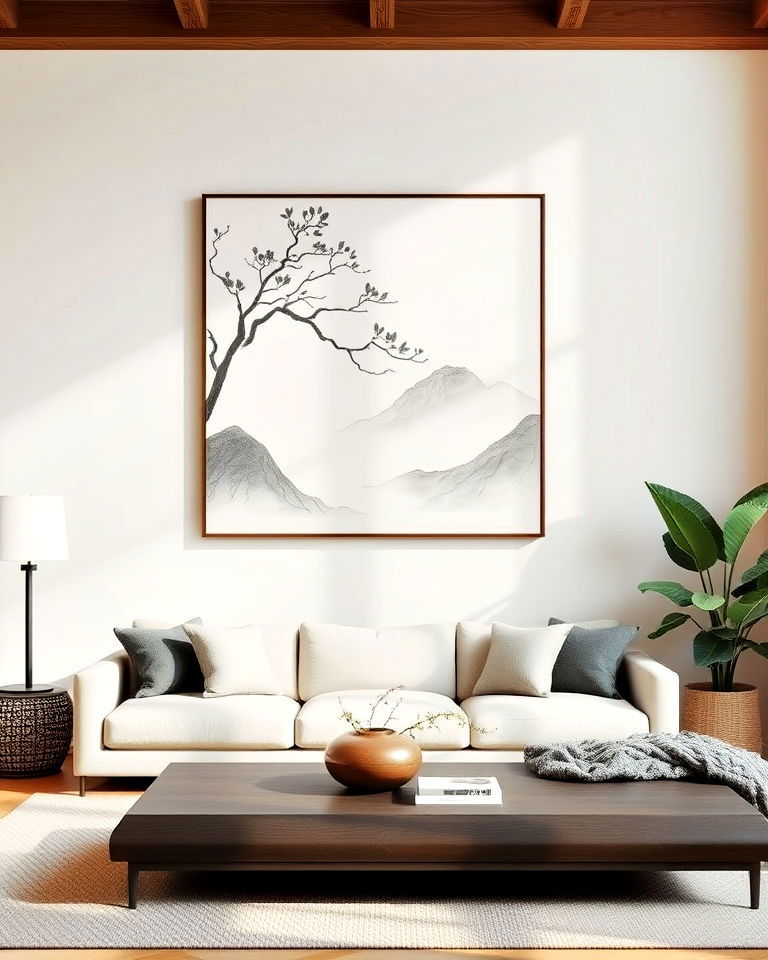
Incorporate artwork that reflects nature, such as minimalist landscape paintings or simple ink drawings of trees or mountains. Zen art should evoke a sense of peace and harmony, using natural themes and soft, muted colors. Keep the artwork simple and understated, allowing it to enhance the room's tranquility without becoming a focal point.
18. Floor-to-Ceiling Windows
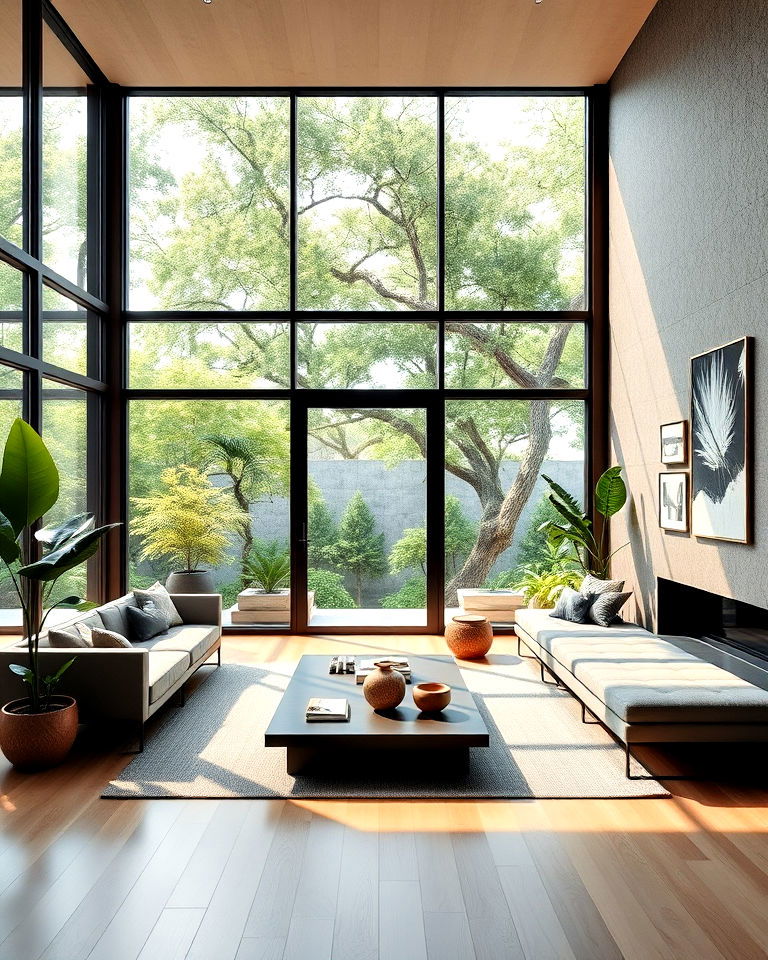
If possible, opt for floor-to-ceiling windows to bring in natural light and connect the living room to the outdoors. Large windows help create a sense of openness and allow you to incorporate nature into your space without leaving the room. The view of greenery or natural landscapes can greatly enhance the peaceful, Zen-like atmosphere.
19. Wooden Ceiling Beams
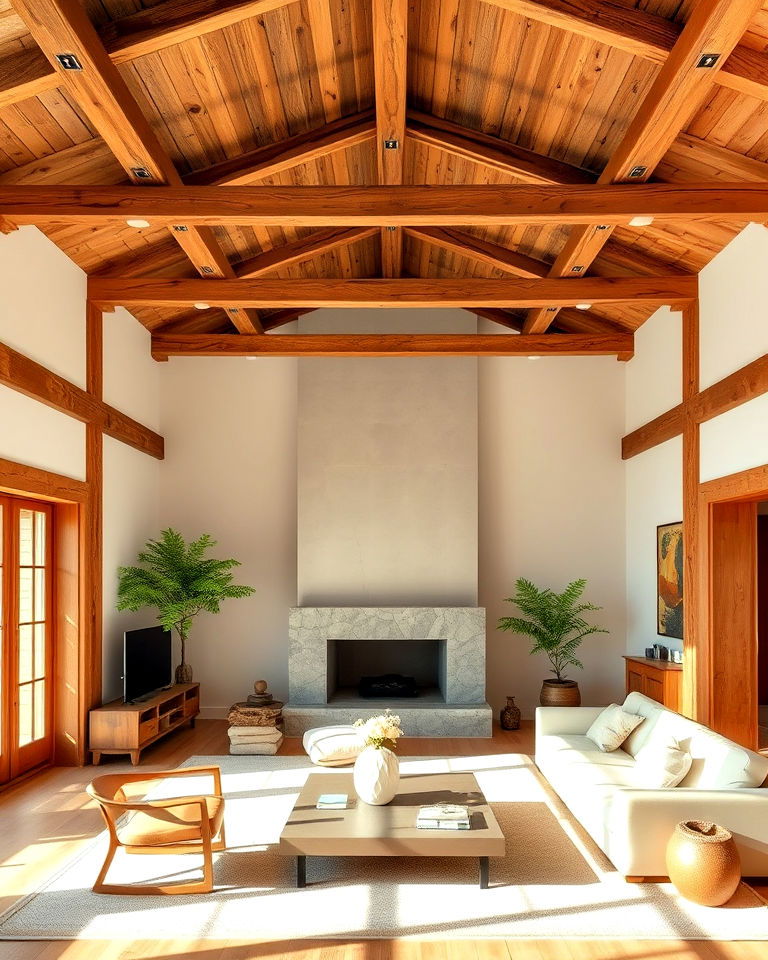
Elevate your home with a sleek, modern zen-style living room that blends elegance with tranquility. Exposed wooden ceiling beams add an organic element to the space, emphasizing natural materials and simplicity for a Zen-inspired look. These beams can create a sense of height and spaciousness while maintaining a rustic, grounded feel. The wood's natural texture complements the overall Zen aesthetic, adding warmth without detracting from the minimalist design.
20. Soundproofing Elements
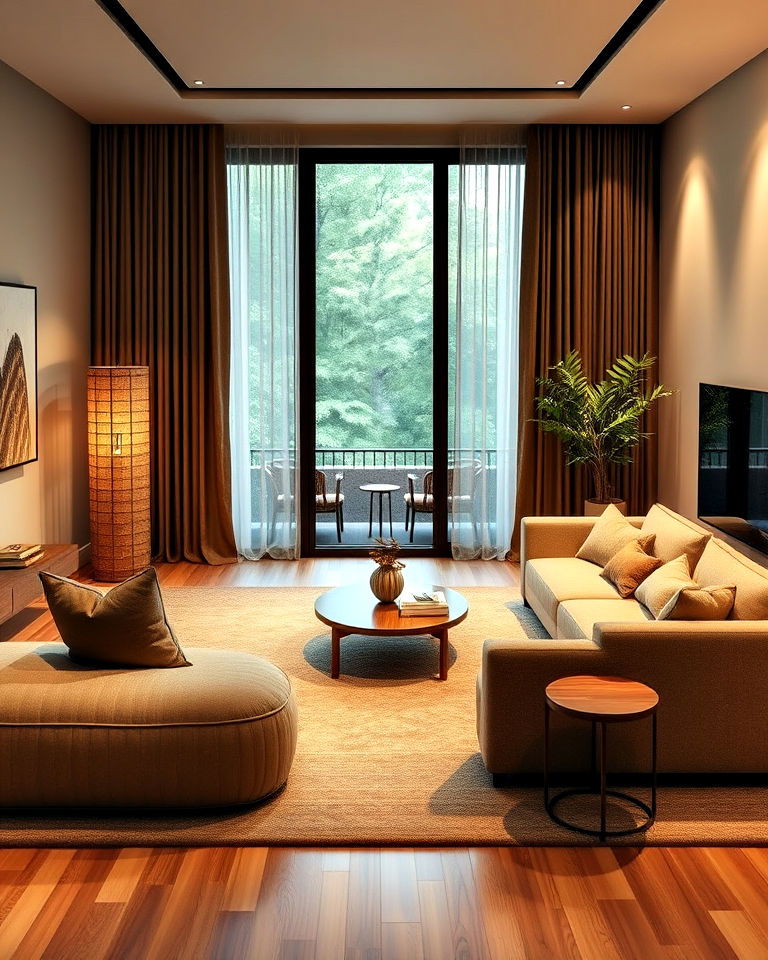
To create a truly peaceful environment, consider adding soundproofing elements to your living room. Soft textiles, like thick curtains, area rugs, or upholstered furniture, can absorb noise and reduce outside distractions. The quieter the space, the easier it is to relax and focus, which is crucial for maintaining the tranquility of a Zen-inspired room.
21. Symmetry and Balance
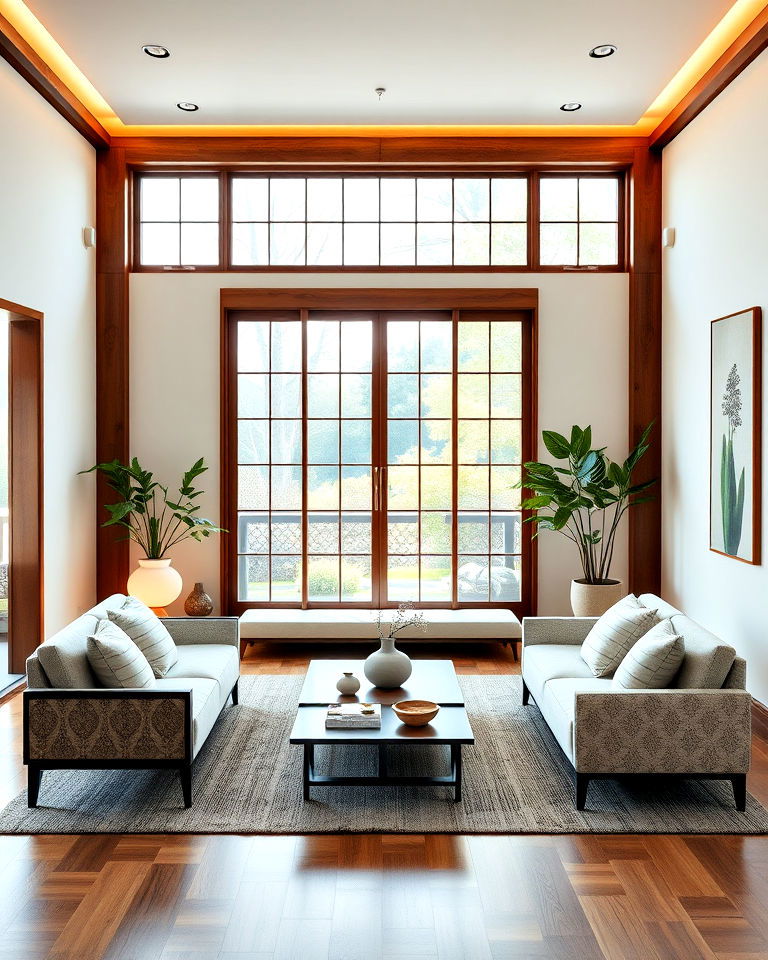
Focus on symmetry and balance when arranging furniture and decor, using an accent wall to enhance the room's harmony. In Zen design, balance is key to creating a harmonious environment. Arrange furniture and accessories in a way that feels even and proportional, avoiding overcrowding on one side of the room. A well-balanced space promotes peace and mental clarity, which are core principles of Zen.
22. Soft Throw Blankets
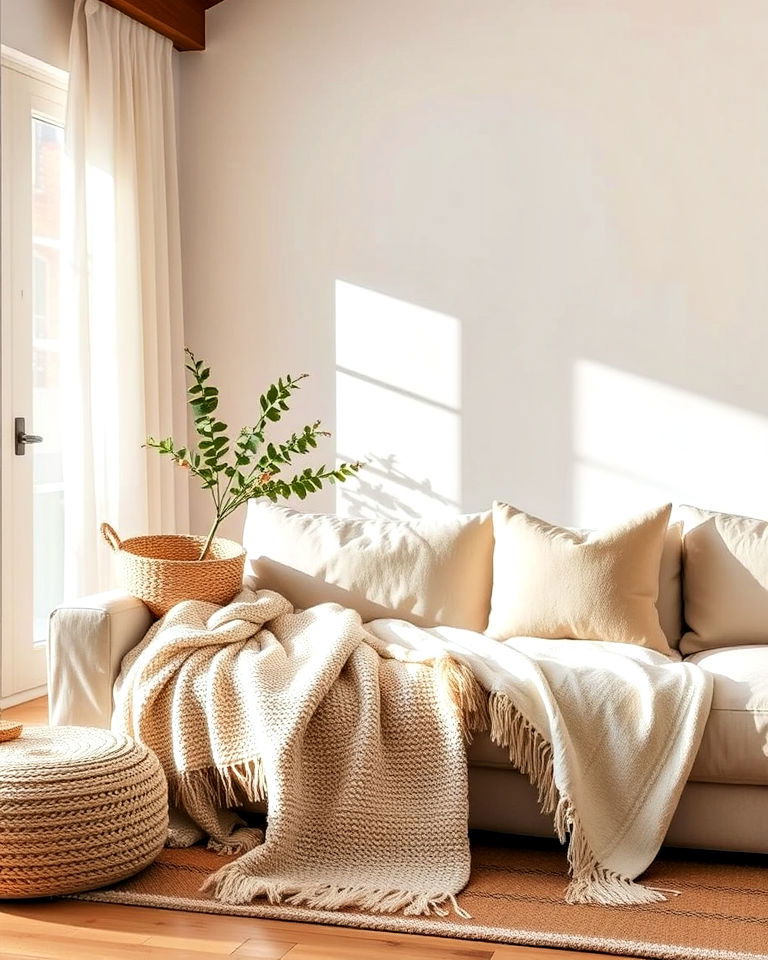
Soft throw blankets made from natural fibers, like cotton or wool, can add warmth and comfort, enhancing the cozy yet minimalist aesthetic. Choose neutral colors that blend with the rest of the room. These blankets not only provide physical comfort but also contribute to the overall sense of relaxation and coziness in the space.
23. Floating Shelves
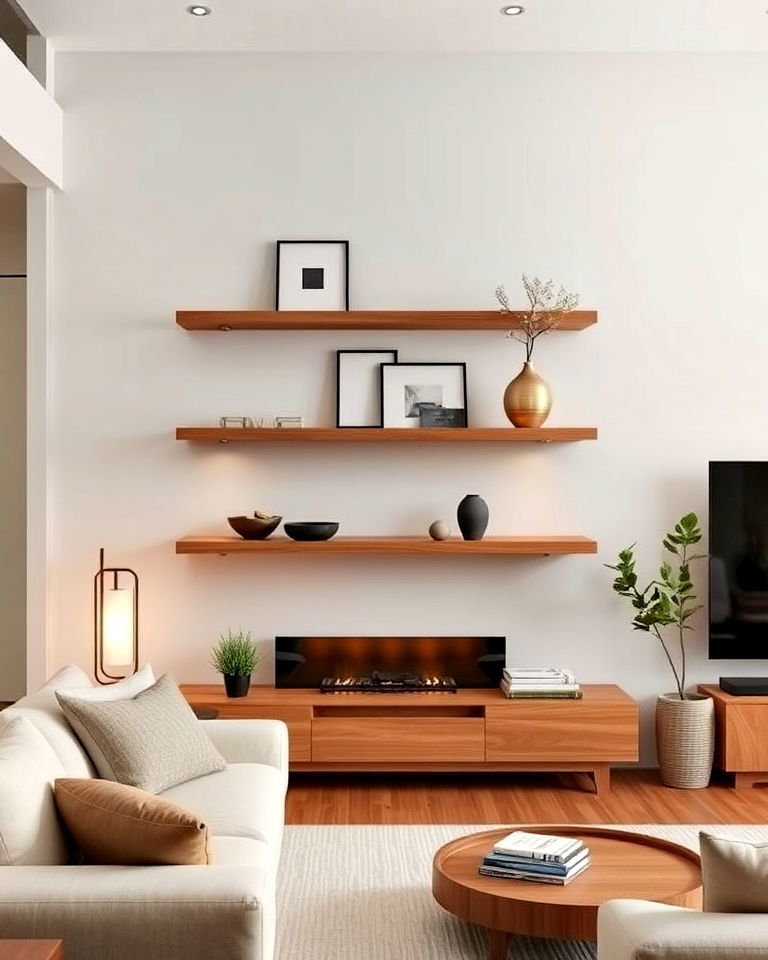
Install floating shelves to display minimal decor or essential items without cluttering the room, maintaining a Zen aesthetic. These shelves maintain the clean, streamlined look of a Zen living room while providing functional storage. Opt for wooden shelves that match the natural materials used in other areas of the room to keep the space cohesive.
24. Meditation Stones

Transform your space into a sanctuary with peaceful zen living rooms for ultimate relaxation and calmness. Add a few smooth meditation stones to your living room as a decorative accent to enhance the natural and calming vibe. These stones symbolize peace and balance in Zen philosophy, and their simple, natural form fits perfectly in a minimalist space. Use them sparingly, perhaps on a low table or shelf, to maintain the room's simplicity while enhancing its Zen feel.
25. Low Bookshelves

Low bookshelves keep the focus on the floor and maintain the room's sense of openness. Use them to store only essential items or to display simple decor like plants or meditation tools. Keep the bookshelf design minimal and in line with the natural materials used throughout the space, helping to reinforce the peaceful, clutter-free atmosphere.
Conclusion:
To create a truly serene space, focus on decluttering and simplifying your design choices. The key takeaways include incorporating neutral colors, minimalist furniture, and natural elements like indoor plants or soft lighting to create a serene space. By balancing textures, introducing water features or soothing scents, and ensuring an open flow, you will achieve the tranquil environment you desire. This approach not only enhances your living space but also promotes a lifestyle centered around mindfulness and balance—two essential elements of Zen living.
Key Takeaways:
- Neutral Color Palette: Stick to soft, neutral colors like beige, white, and light gray to create a calm and serene atmosphere.
- Minimalist Design: Focus on clean lines and simple furniture that keep the space uncluttered and open.
- Natural Elements: Incorporate materials like wood, stone, and plants to evoke a connection with nature.
- Soft, Diffused Lighting: Use soft lighting, candles, or lanterns to create a tranquil ambiance.
- Decluttered Space: Keep surfaces and decor minimal to maintain mental clarity and relaxation.
- Zen Accents: Add thoughtful elements like water features, natural scents, and earthy accents to enhance mindfulness.
What to Do Next:
- Evaluate Your Living Room: Assess how you can incorporate Zen elements like decluttering or adding natural materials.
- Introduce Soft Lighting: Swap out harsh lights for soft, diffused lighting options such as lamps or candles.
- Add Plants: Bring in some indoor plants or greenery to introduce calm and life to your space.
- Declutter: Remove any unnecessary decor or items that don't contribute to a peaceful environment.
- Add Zen Accents: Consider water features, minimalist artwork, or simple sculptures that promote mindfulness and relaxation.

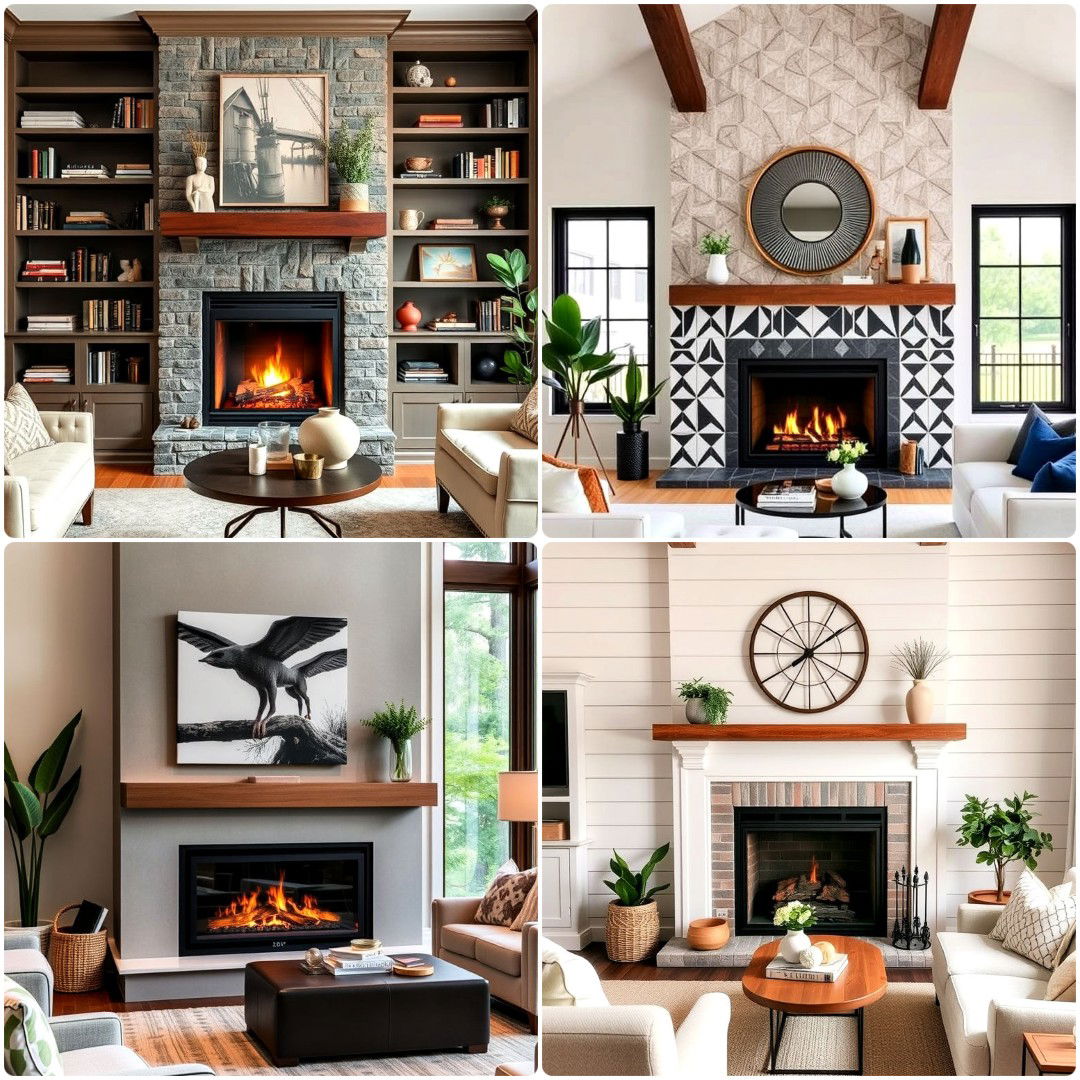
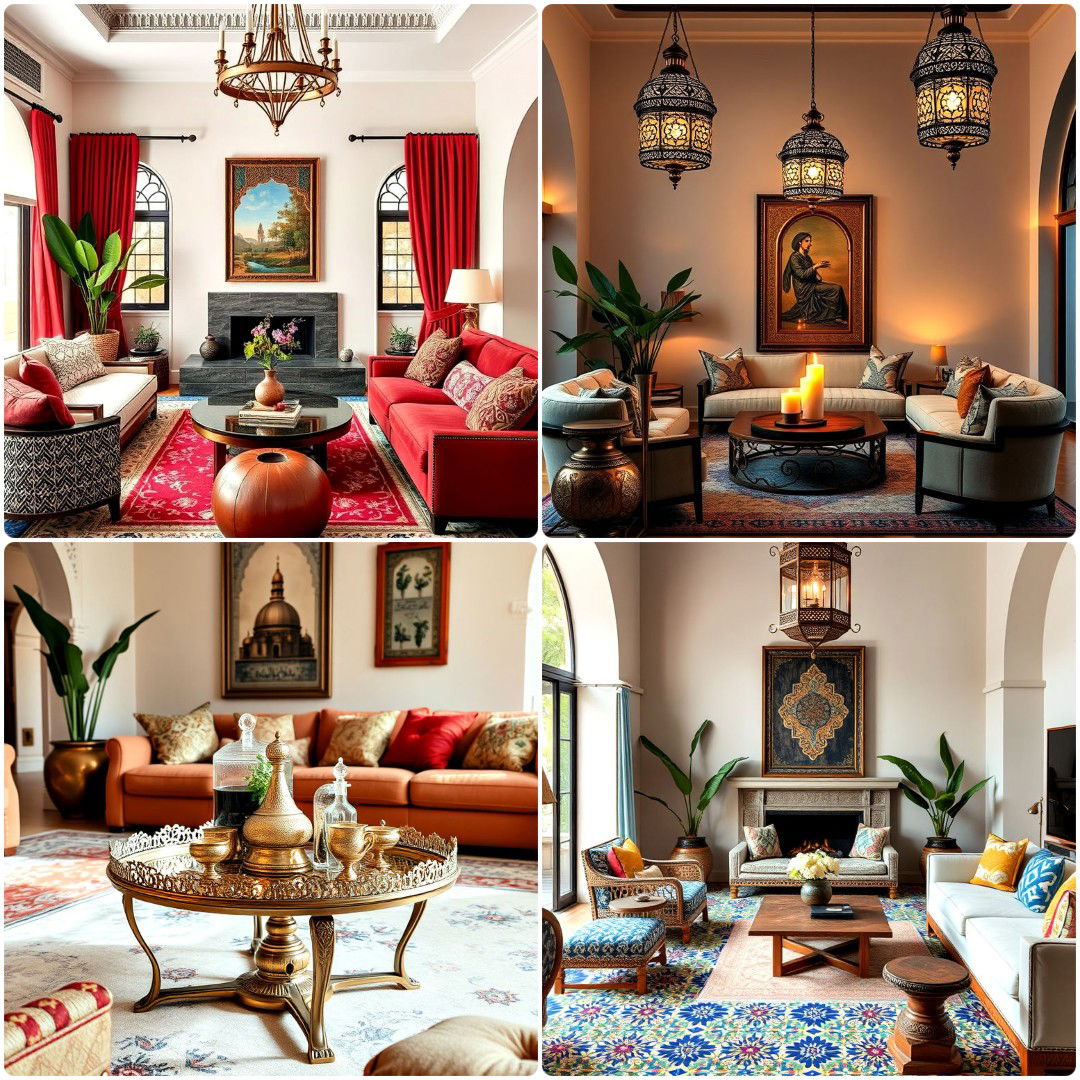

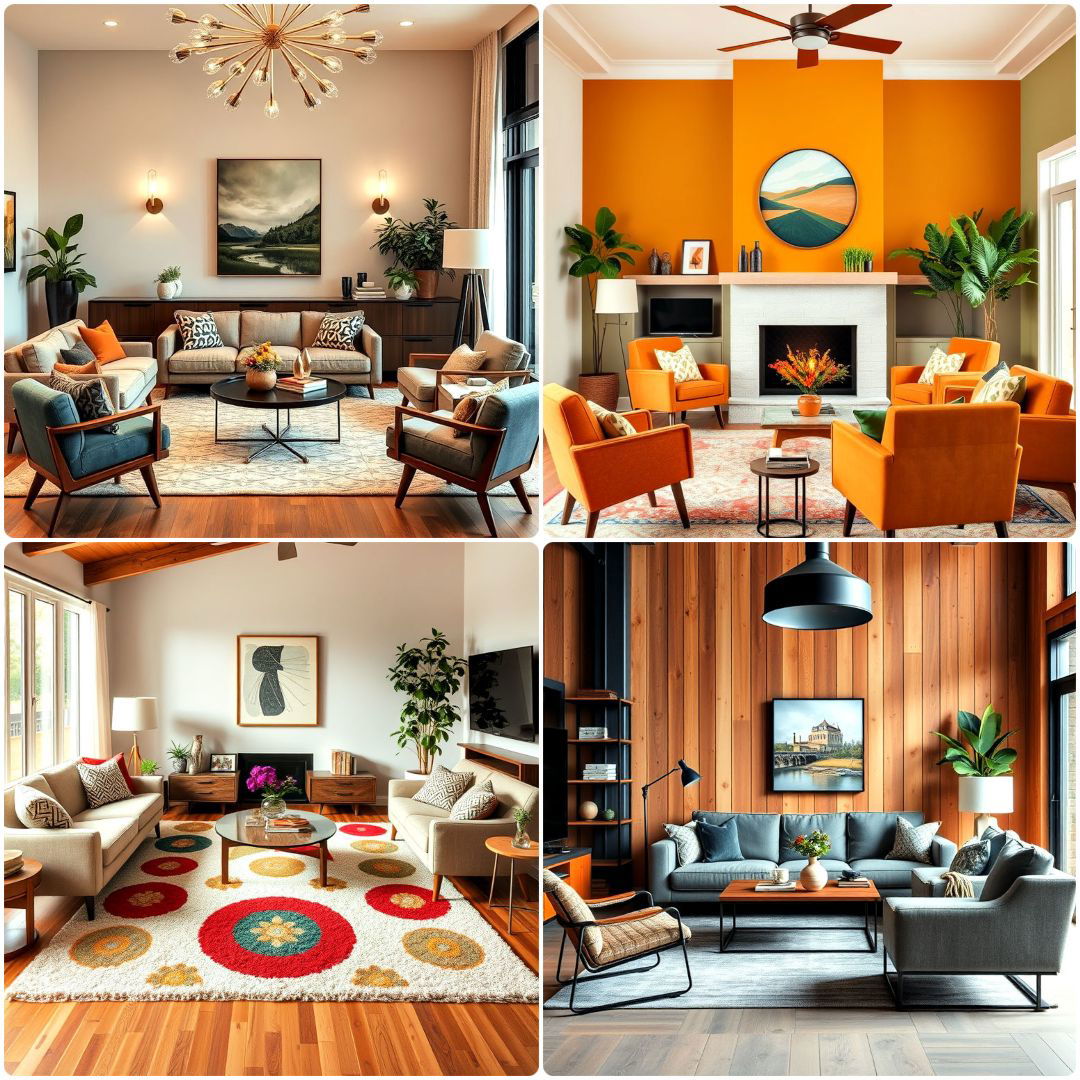

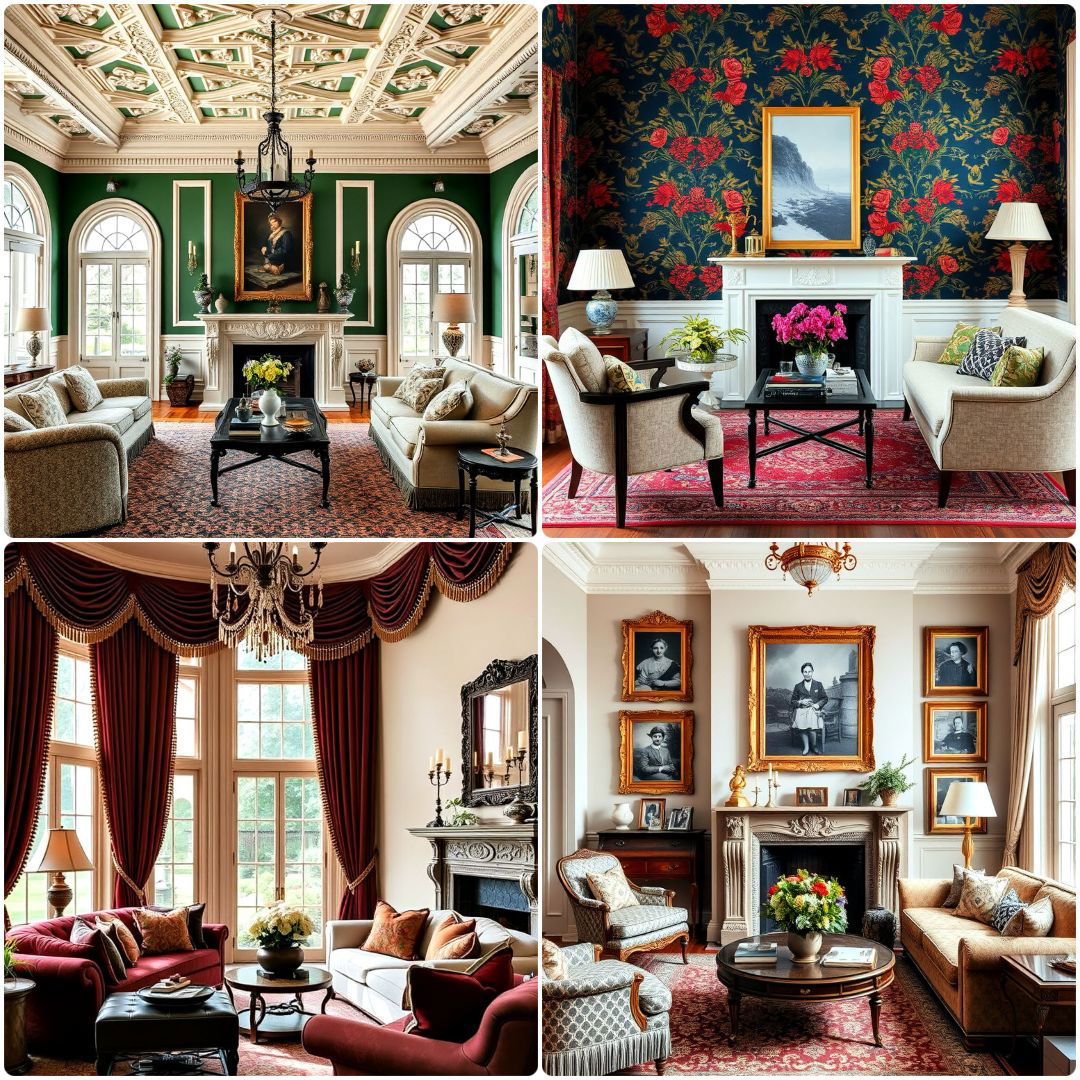
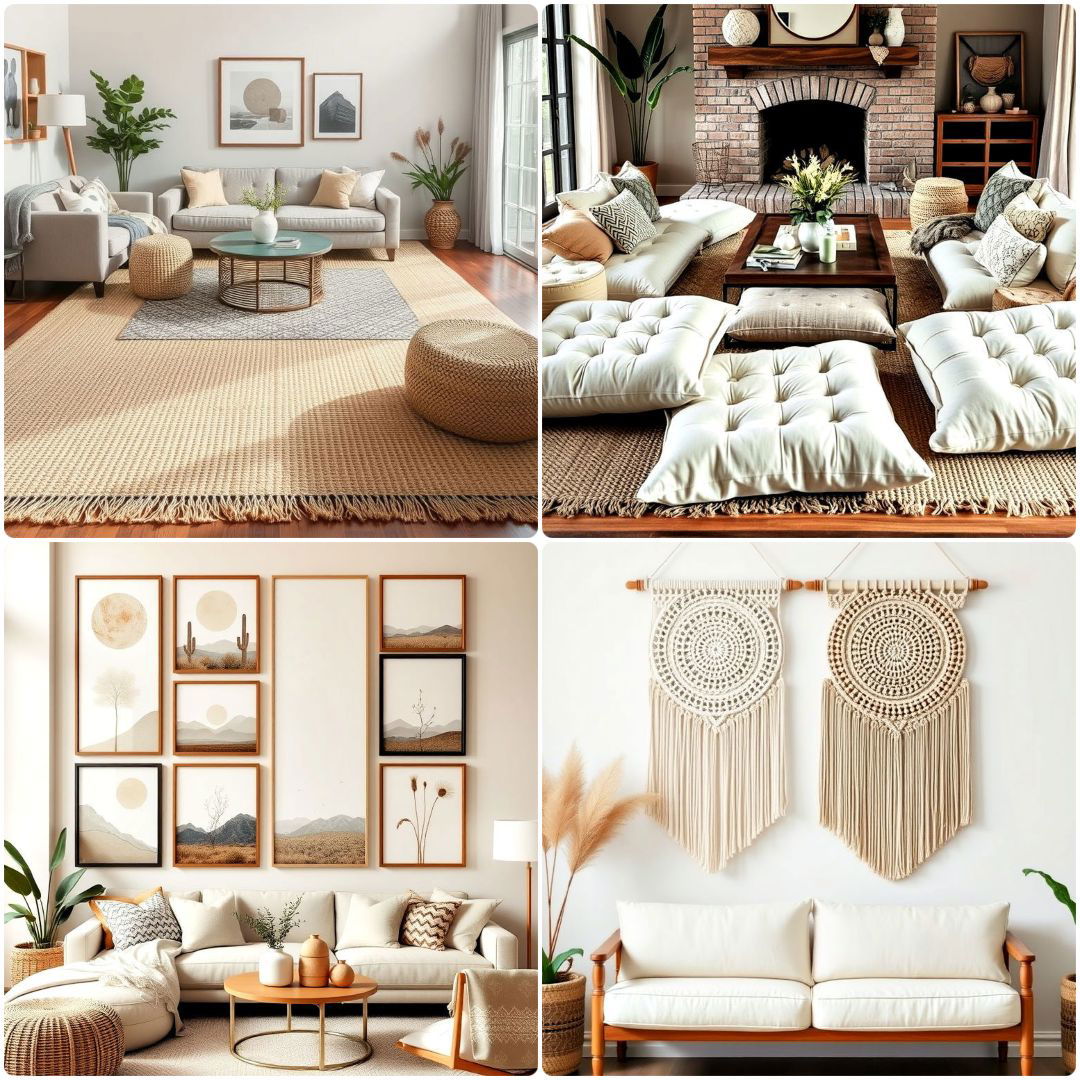
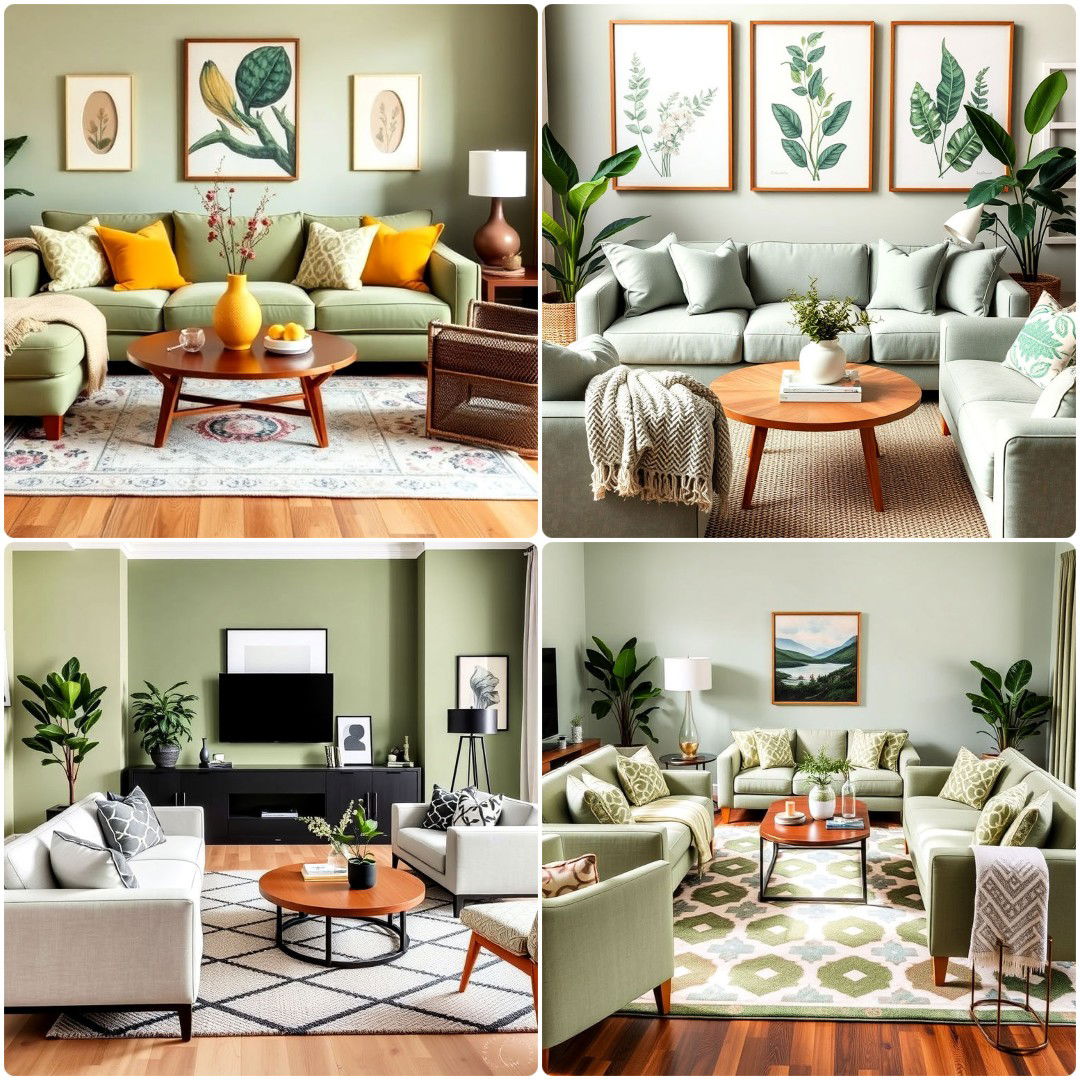
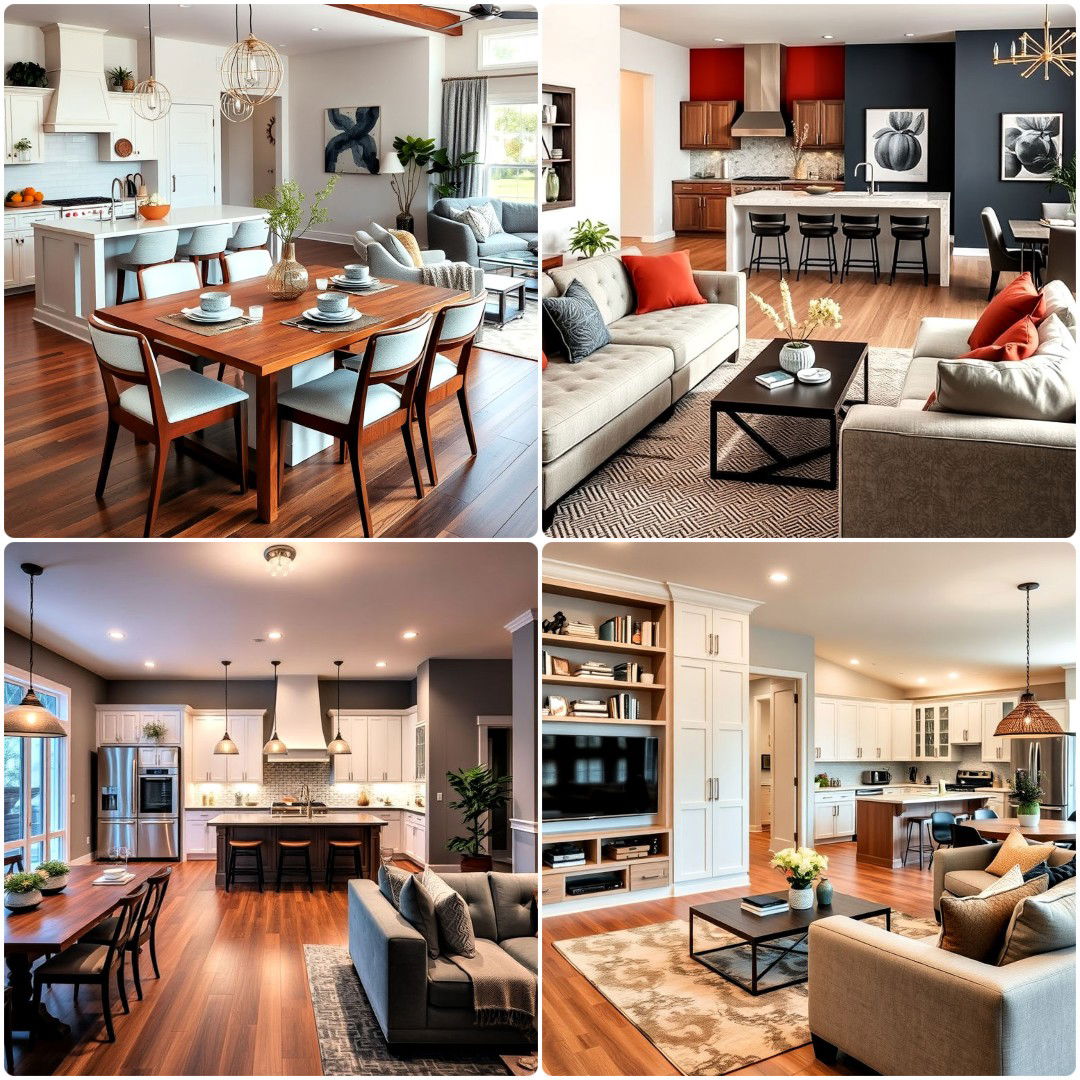

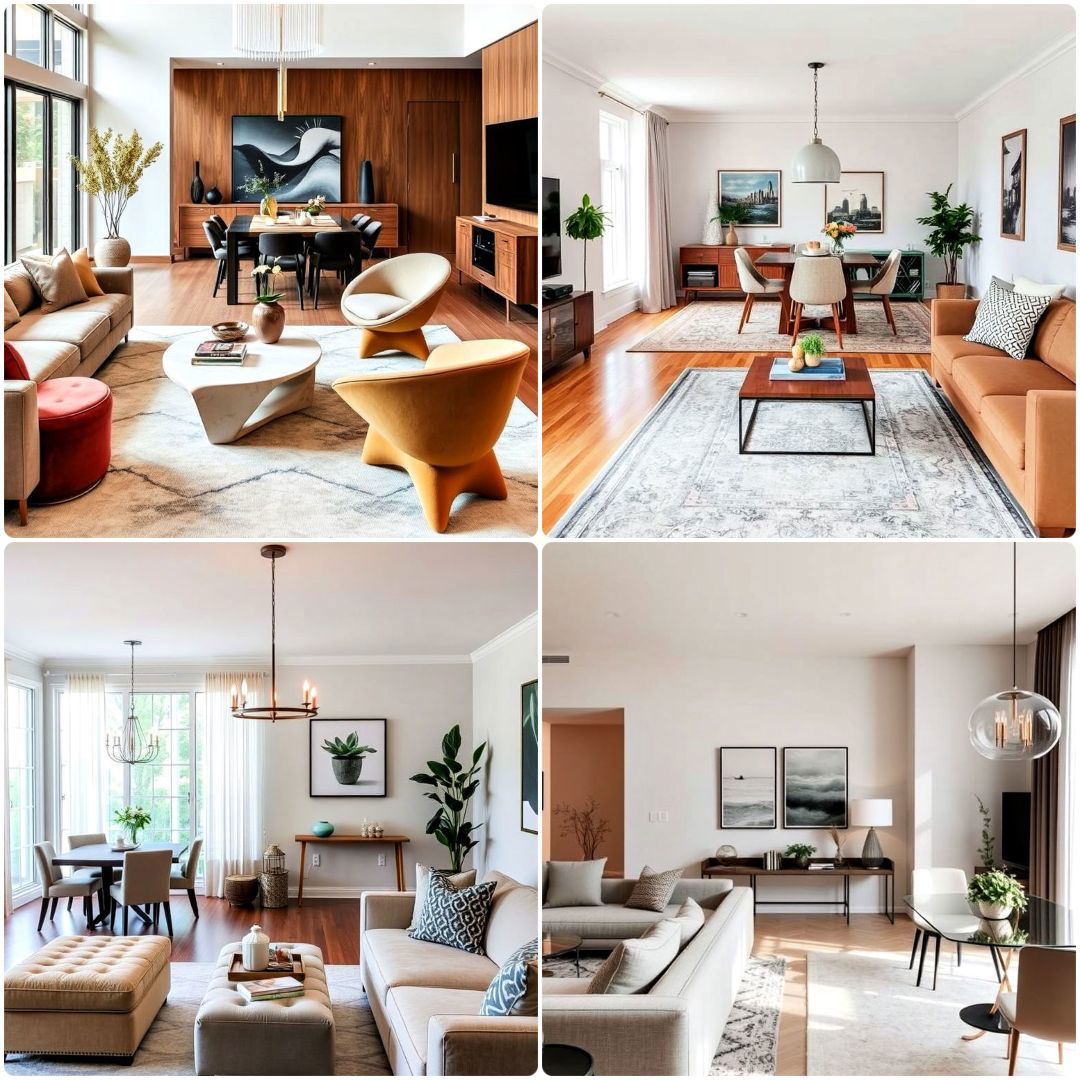
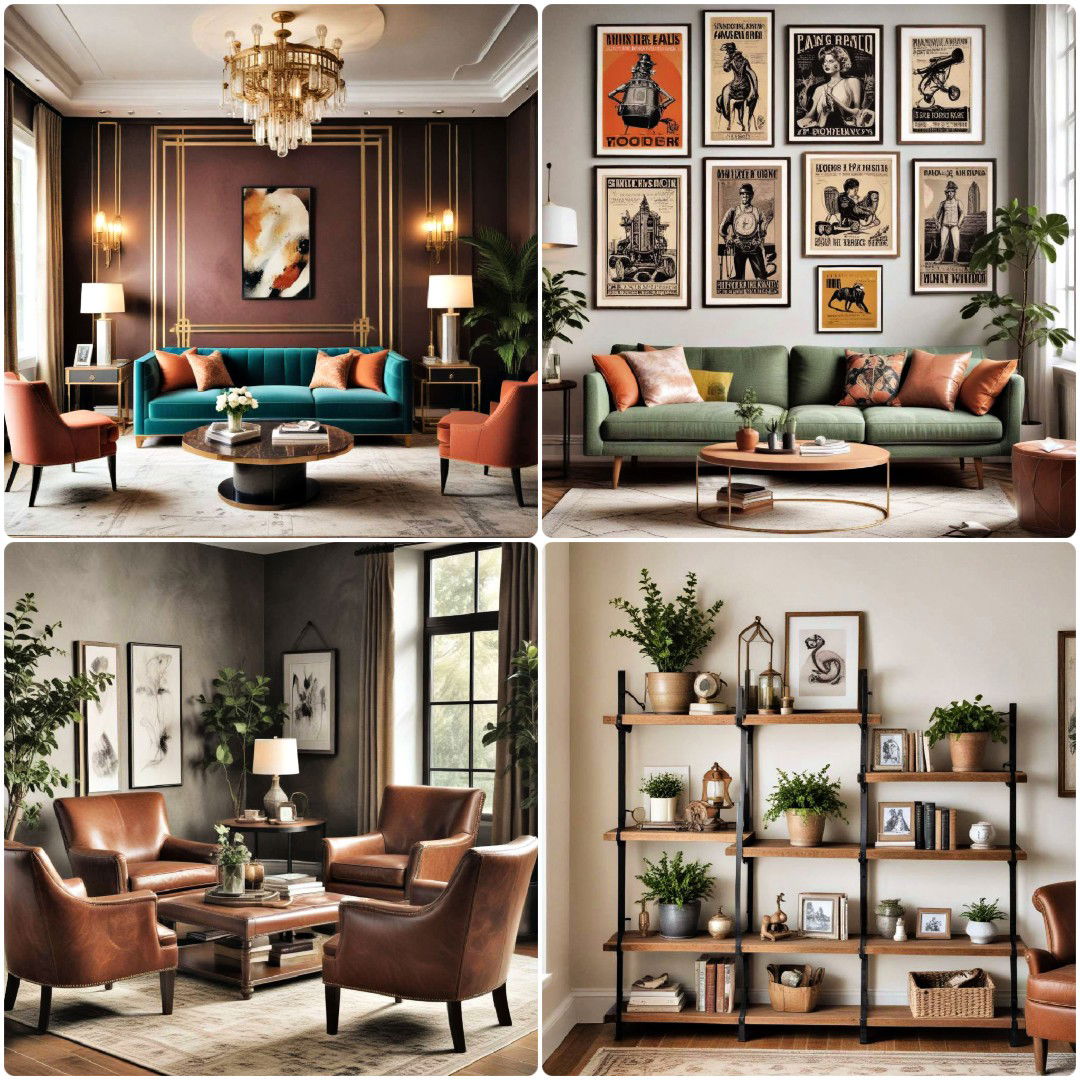
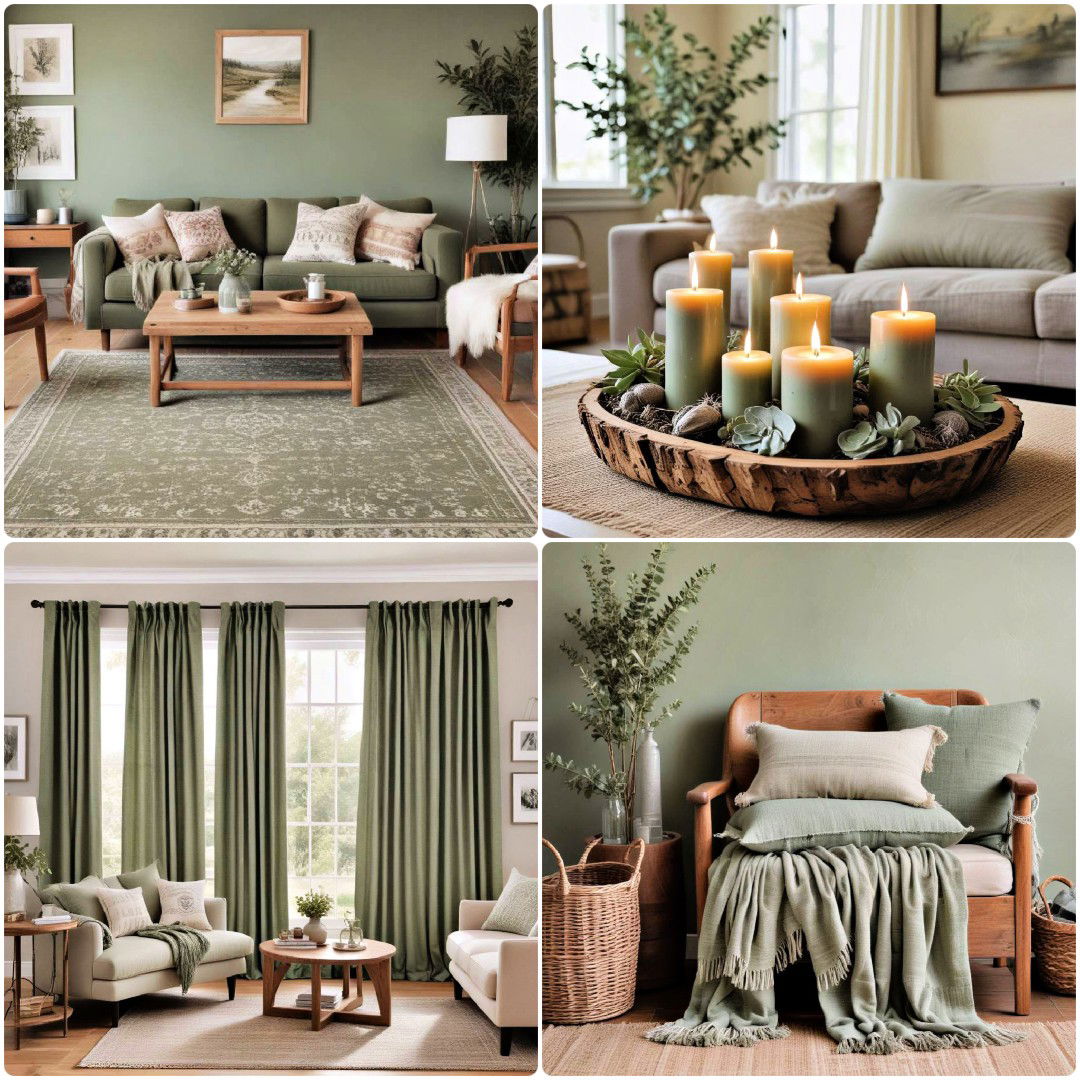
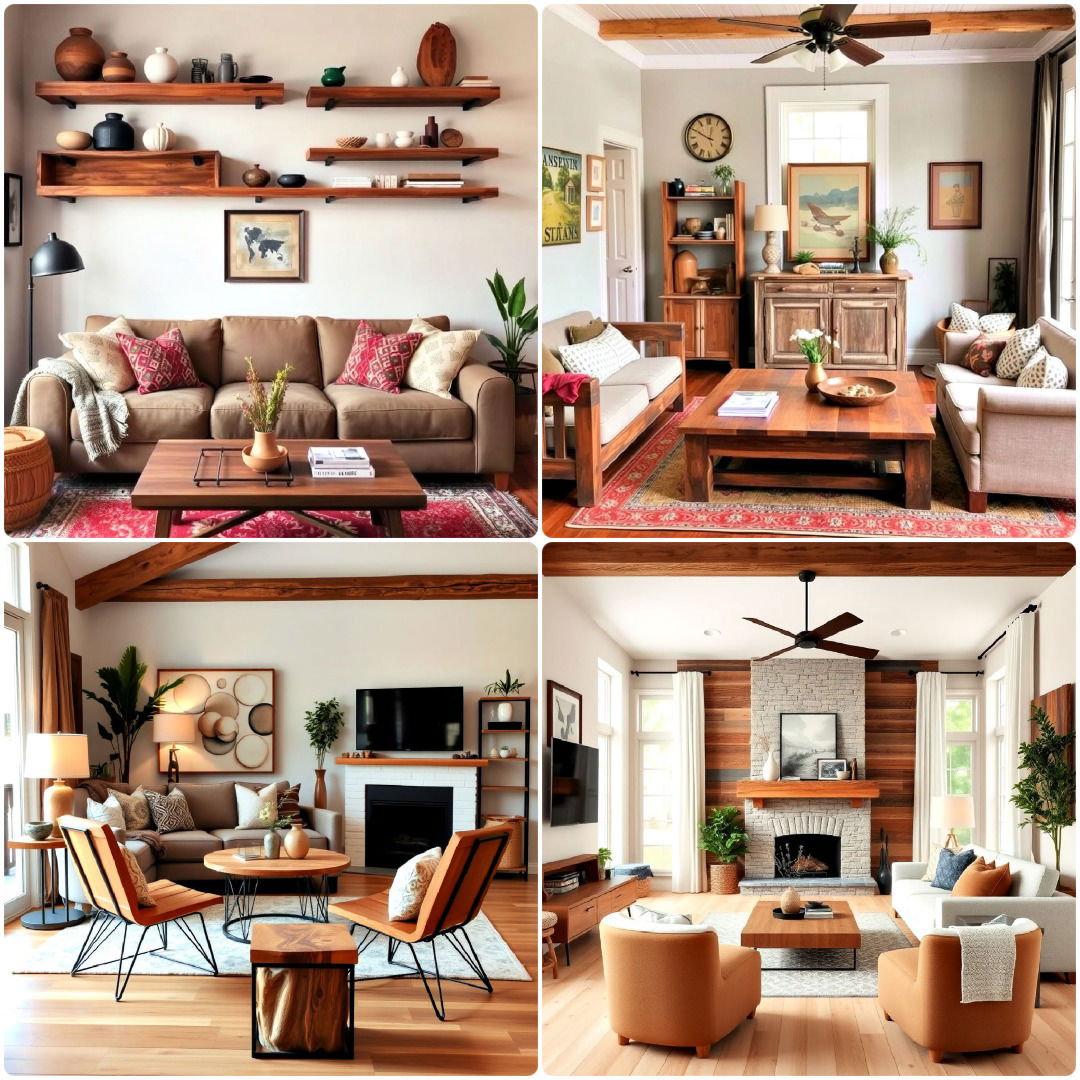
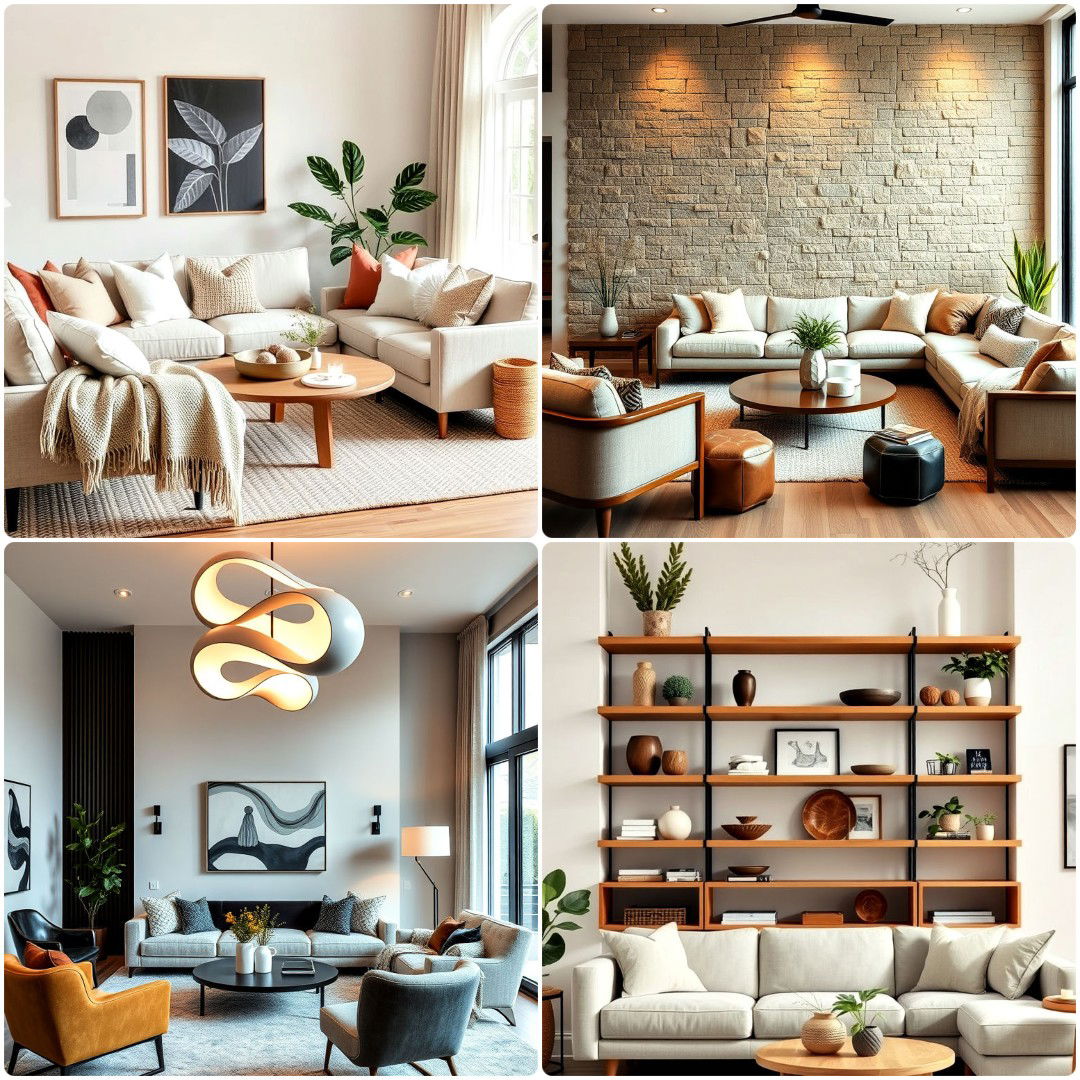
Leave a Reply